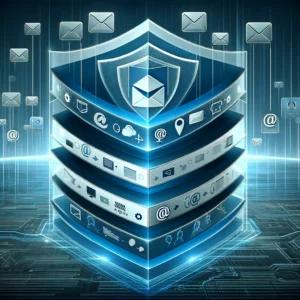Introduction to Multilayered Cybersecurity
In today’s digital era, the landscape of cybersecurity is continually evolving, and implementing a multilayered cybersecurity strategy is more critical than ever for organizations. This strategy, focusing on creating multiple layers of defense throughout an organization’s IT infrastructure, plays a pivotal role in detecting, preventing, and mitigating cyber threats. With the HR department often being the target of sophisticated cyber-attacks due to their sensitive information, understanding and applying a multilayered approach to cybersecurity is essential for safeguarding against potential threats.

The HR Department as a Cybersecurity Focal Point
HR departments are treasure troves of sensitive data, including personal employee information and confidential organizational details. This data richness makes them attractive targets for cybercriminals, who use tactics like phishing, whaling, and malware attacks to exploit vulnerabilities. The need for HR to communicate externally increases the risk, allowing attackers to masquerade malicious intentions behind seemingly legitimate requests.
Case Study: The CareFinders Total Care Incident
The attack on CareFinders Total Care in October 2020 is a grim reminder of HR departments’ vulnerabilities. A seemingly benign email containing a malware-infected resume led to the organization’s paralysis by RYUK ransomware. This incident highlights the necessity of robust cybersecurity measures to protect against such sophisticated and deceptive attacks.
Components of a Multilayered Cybersecurity Strategy
A comprehensive cybersecurity strategy includes several key components:
-
Reliable Email Filters
Employing advanced email filters to block phishing attempts and malicious attachments is a primary defense mechanism.
Organizations must implement sophisticated email filtering technologies to counteract phishing and malicious email threats. These filters examine incoming emails for suspicious content and attachments, significantly reducing the likelihood of malware penetration.
-
Security Operations Centers (SOC)
A SOC provides essential real-time monitoring and response capabilities, promptly addressing any security incidents.
Establishing a SOC is vital for continuously surveilling an organization’s cyber health. Staffed by experts, the SOC acts as a central point for analyzing and responding to cybersecurity incidents, ensuring a swift and coordinated defense against attacks.
-
Employee Training and Awareness
Educating the workforce on the risks associated with cyber threats and training them to recognize and react appropriately is crucial for strengthening an organization’s cyber defenses.
A well-informed employee base is fundamental to preventing cyber attacks. Organizations must prioritize cybersecurity awareness, embedding it into the company culture through regular training sessions and awareness programs.
-
Regular Security Audits and Updates
Performing regular security checks and updating systems to patch vulnerabilities are critical for maintaining a secure IT environment.
Security audits are indispensable for identifying weaknesses within an organization’s IT infrastructure. Regular audits and implementation of the latest security updates fortify defenses against cyber threats.
Conclusion: The Imperative of Multilayered Cybersecurity
The case of CareFinders Total Care vividly illustrates the dire consequences of inadequate cybersecurity measures. As cyber threats evolve, adopting a multilayered cybersecurity strategy is imperative for organizations, particularly HR departments, to protect sensitive data and maintain operational integrity. By strategically implementing robust security measures, organizations can defend themselves against the ever-present danger of cyber attacks, ensuring their continued success and security in the digital age.
FAQs
| What is a multilayered cybersecurity strategy? | A multilayered cybersecurity strategy involves implementing multiple layers of defense throughout an organization’s IT infrastructure to protect against cyber threats. |
| Why are HR departments particularly vulnerable to cyber attacks? | HR departments are targeted because they handle sensitive personal and organizational information, making them attractive targets for cybercriminals. |
| How can organizations protect against phishing and whaling attacks? | Implementing advanced email filters and conducting regular employee training on recognizing and responding to these threats are effective strategies. |
| What role does a Security Operations Center play in cybersecurity? | A SOC provides continuous monitoring and analysis of an organization’s cybersecurity posture, enabling real-time detection and response to threats. |
| Why is employee training necessary in cybersecurity? | Educating employees about cyber threats and their responsibilities in preventing them is crucial for strengthening an organization’s overall cybersecurity. |
| How often should security audits be conducted? | Every organization should perform regular security audits to identify and address vulnerabilities, with the frequency depending on the organization’s size and complexity of the IT infrastructure, but not less than twice per year. |

